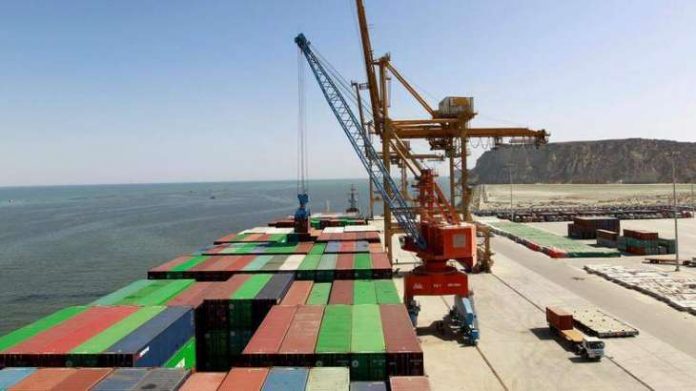ISLAMABAD: The PTI government’s difficulties on the external front eased a trifle as the current account deficit for the first two months of the current fiscal came down $6.167 billion, with merchandise exports posting an over eight percent increase in August from a year ago, reported the Pakistan Bureau of Statistics Tuesday.
During the ongoing fiscal, in rupee terms exports registered a 27.4pc spike in the second month – on the back of 17pc depreciation in the exchange rate over the previous year making exports cheaper.
In July 2019, the export proceeds crossed $6.2 billion, registering $2.02 billion overall, up from $1.86bn in the same month of the previous fiscal.
Almost at the same time, the released data revealed that remittances reflected a 13.5pc increase compared to the last year. Thus, both the main foreign exchange earners for the country – exports and remittances – left the economic managers a trifle relieved. For the uninitiated, depletion in foreign exchange reserves, equal to only two months imports, along with payments of outstanding debt due this year was the nub of the crisis for the incumbent managers of the nation’s coffers.
Call it the feel-good factor at the installation of the new government, or merely a coincidence, right from the commencement of the current fiscal year, things have been on the mend. The remittances saw a 25% year on year hike in July, while the trade deficit flattened out. The month of August has seen that trend continue, with remittances and exports both showing healthy growth, while imports and the trade deficit have largely been flat.
Between July-August FY19, the export proceeds reached $3.66bn from $3.48bn over the corresponding months of last year, reflecting an increase of 5.05pc.
On the other hand, a paltry growth was recorded in imports and trade deficit with the latter going up by 1.2pc to $4.99bn in August versus $4.93bn from the same period last year. In the first two months, the import bill edged up 1.01pc to $9.83bn from $9.73bn the year before.
The trade deficit fell by 1.25pc to $6.167bn in the first two months of the fiscal year, July-August FY19.
The data suggests that the growing trade deficit might have hit a peak. If subsequent months show similar tepid growth in the trade deficit, the incoming government’s fortunes on the external sector could see a turnaround.
It is worth mentioning that in the last 18 months, the federal government has released nearly Rs32bn in cash support for promoting textile and clothing exports. This was doled out under a special prime minister’s package and textile policy for the sector.
The last fiscal year saw the trade deficit rise to an all-time high of $37.6bn, representing a year-on-year growth of 15.8pc. When the PML-N came to power in 2013, the country’s annual trade deficit was $20.44bn which has been continuously on the rise since then.
























